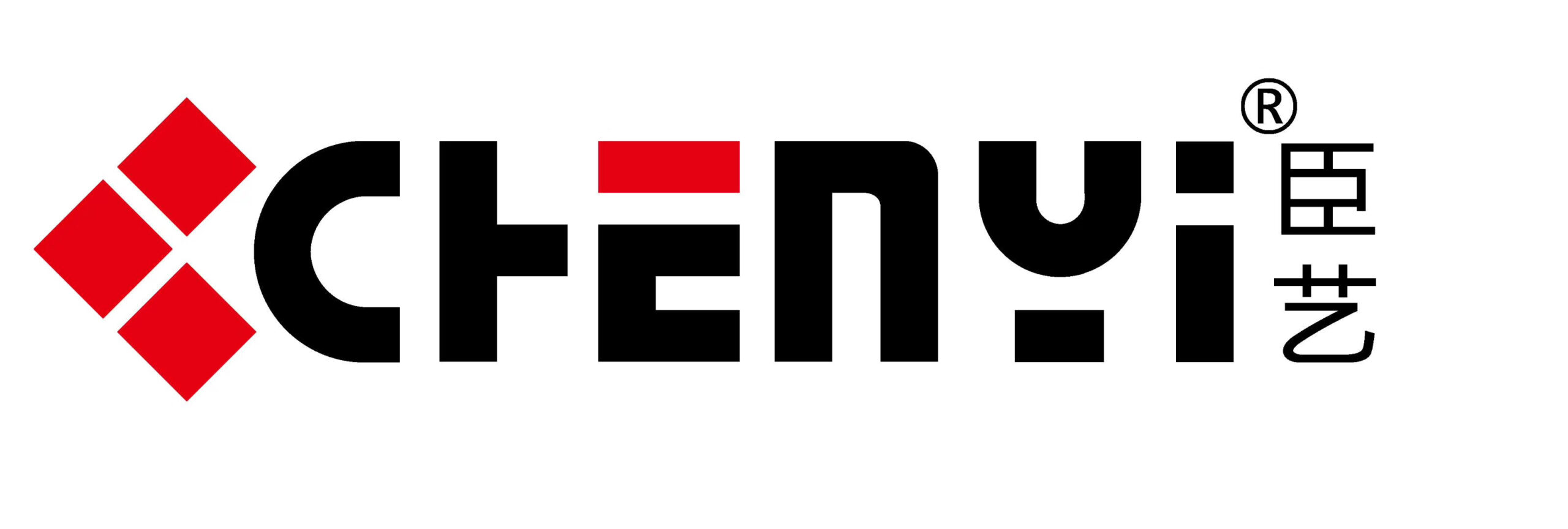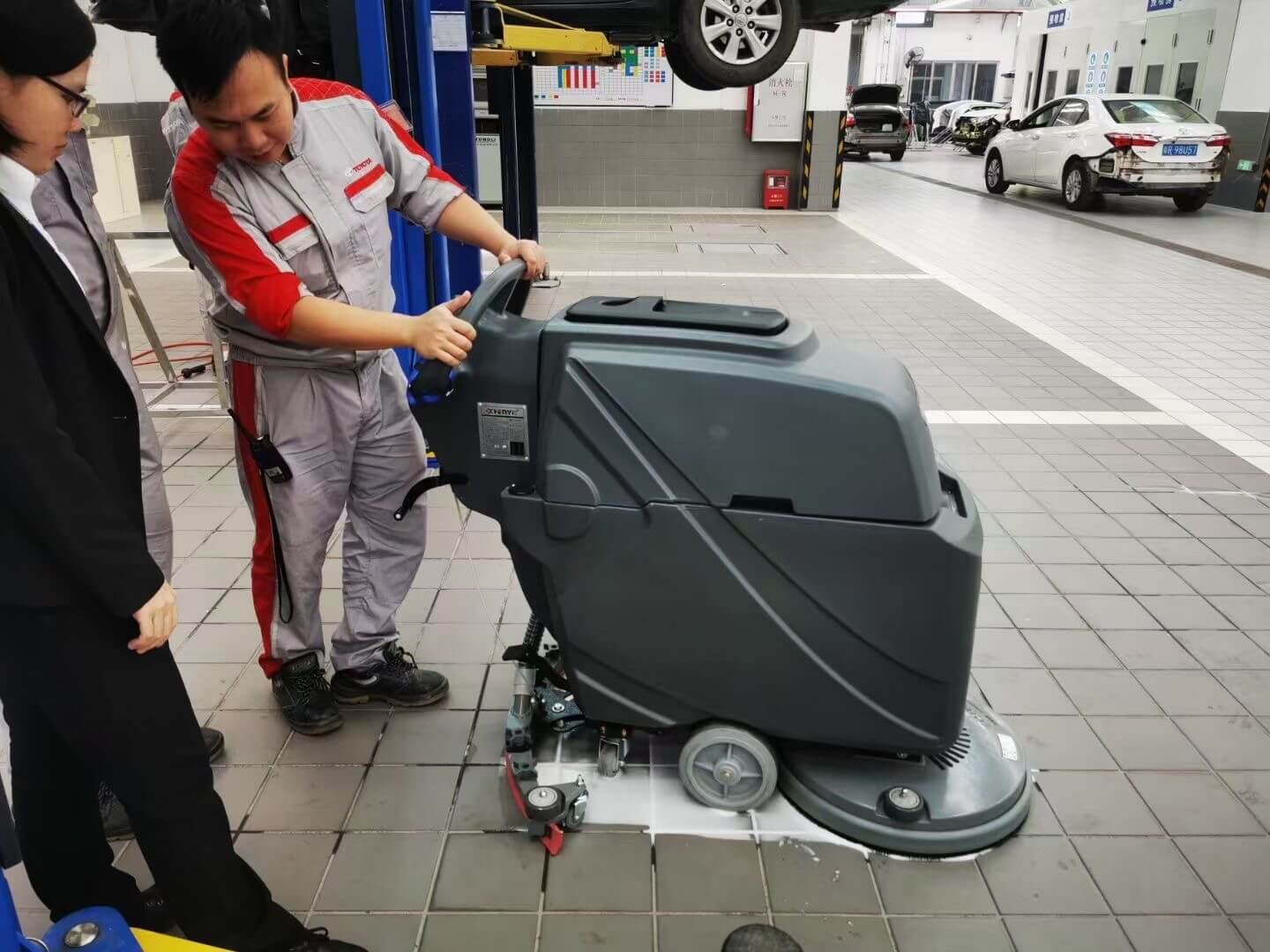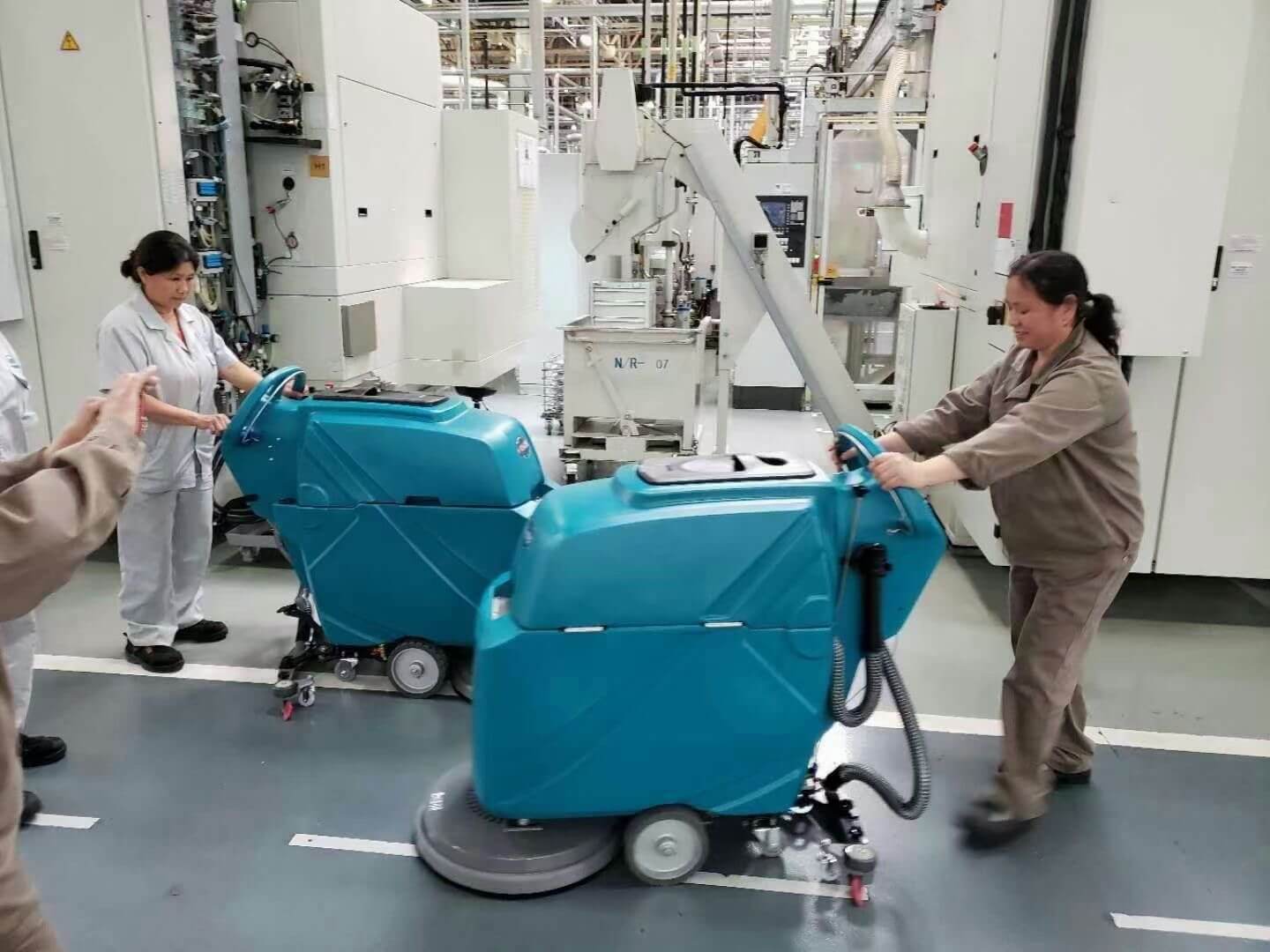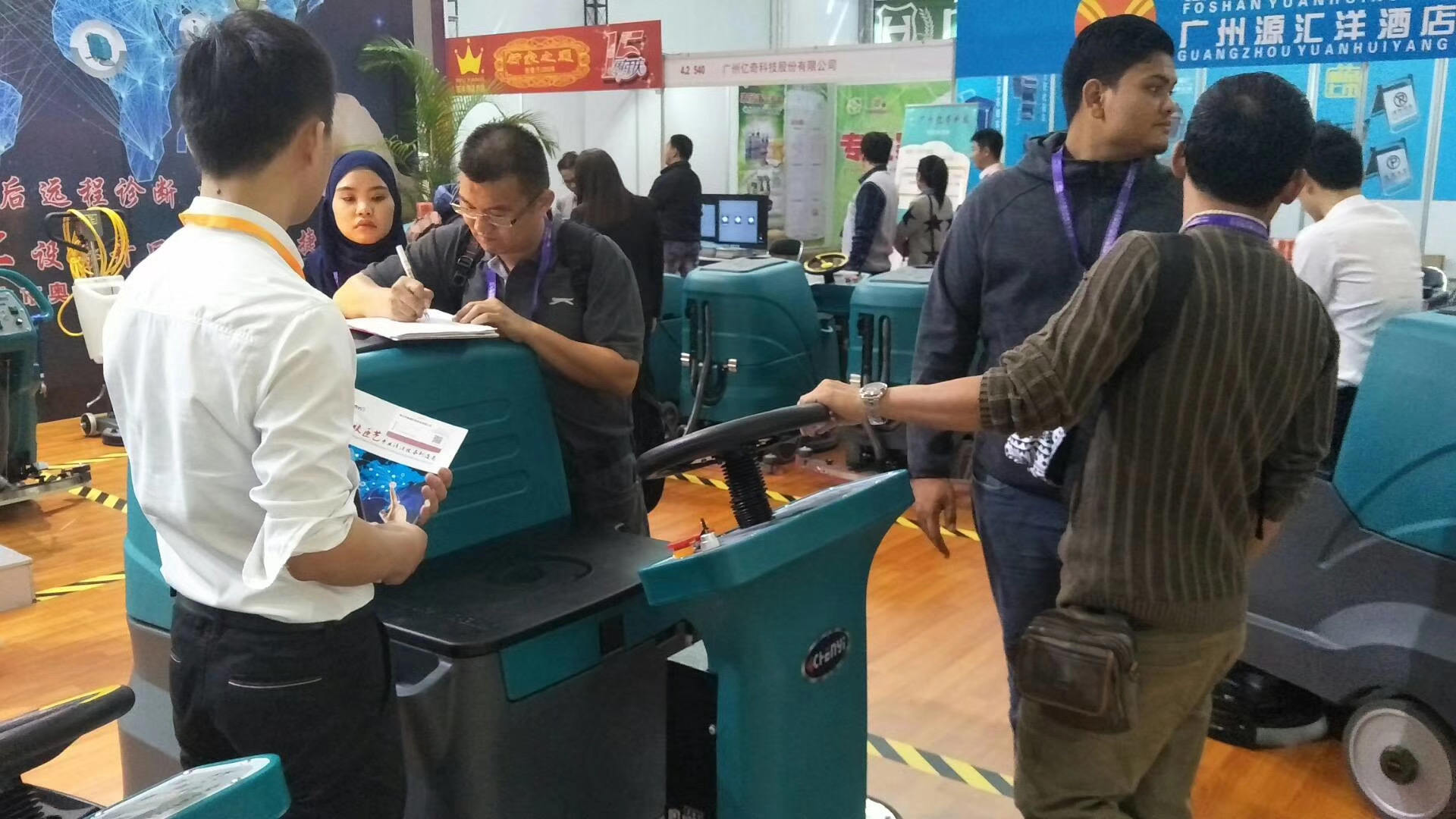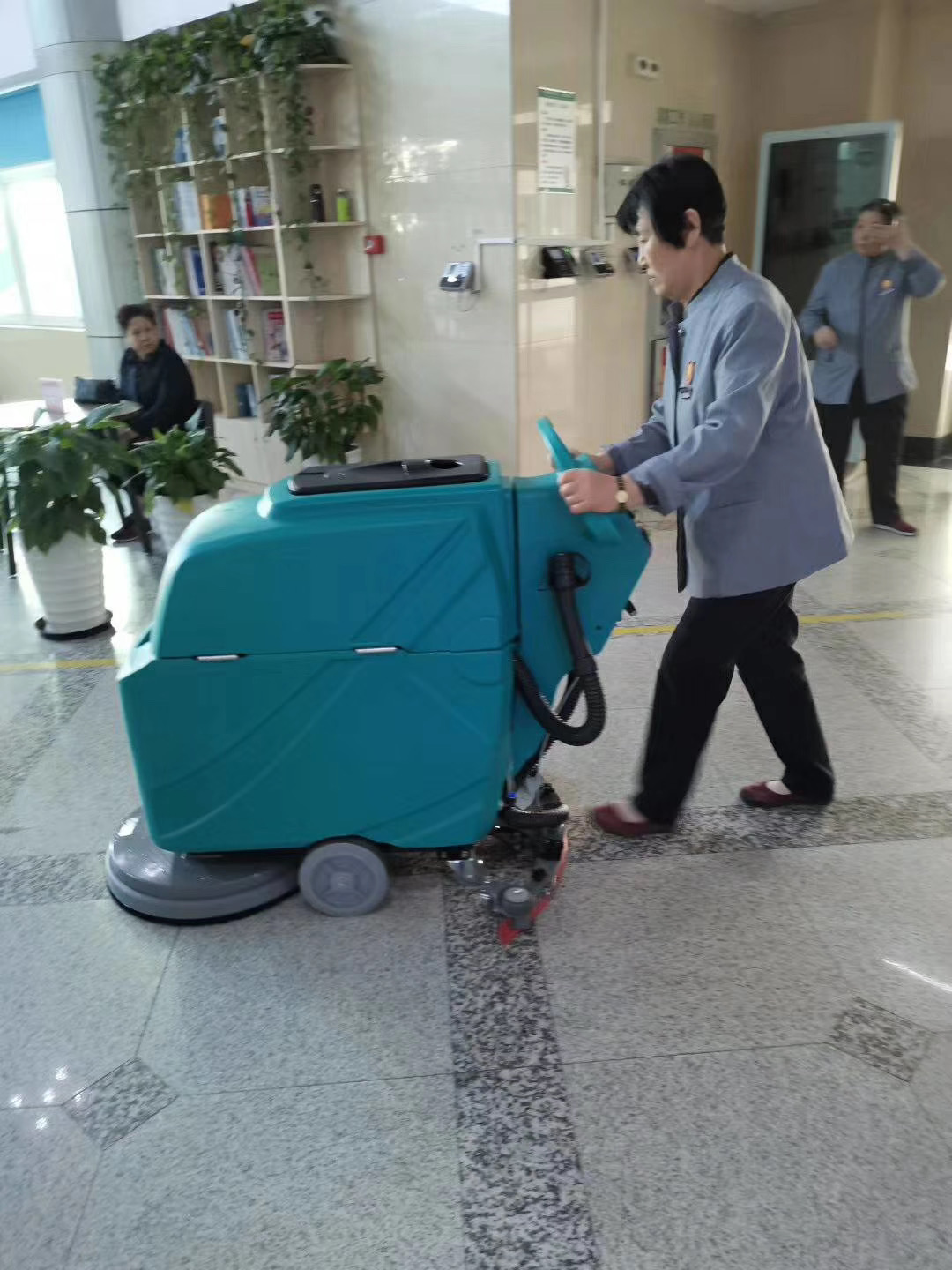In 2022, a small community hospital, covering an area of approximately 8,000 square meters, made a significant investment in its cleanliness and patient care by adopting the CY Hand-Push Scrubber DC520. This hospital features a straightforward layout with patient wards, a small emergency department, and administrative offices, all designed to facilitate efficient movement and care delivery. Given the high foot traffic and the necessity for stringent hygiene standards, the hospital recognized the need for an effective floor-cleaning solution.
Why Choose the CY Hand-Push Scrubber DC520?
When selecting a scrubber for their cleaning needs, the hospital evaluated several options but ultimately chose the CY Hand-Push Scrubber DC520 for a variety of compelling reasons:
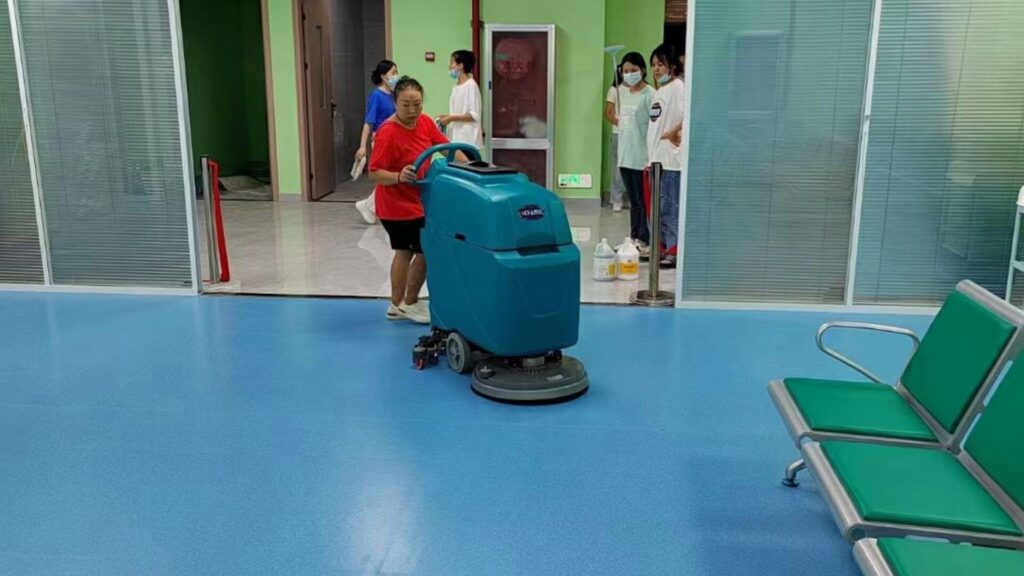
1. Cost-Effectiveness:
The purchase price of the DC520 is competitive, making it an attractive option for budget-conscious healthcare facilities without compromising on quality.
2. Practical Design:
The DC520 is designed with the user in mind. Its lightweight and compact structure allows for easy maneuverability in tight spaces, such as between hospital beds and in corridors, ensuring thorough cleaning without hassle.
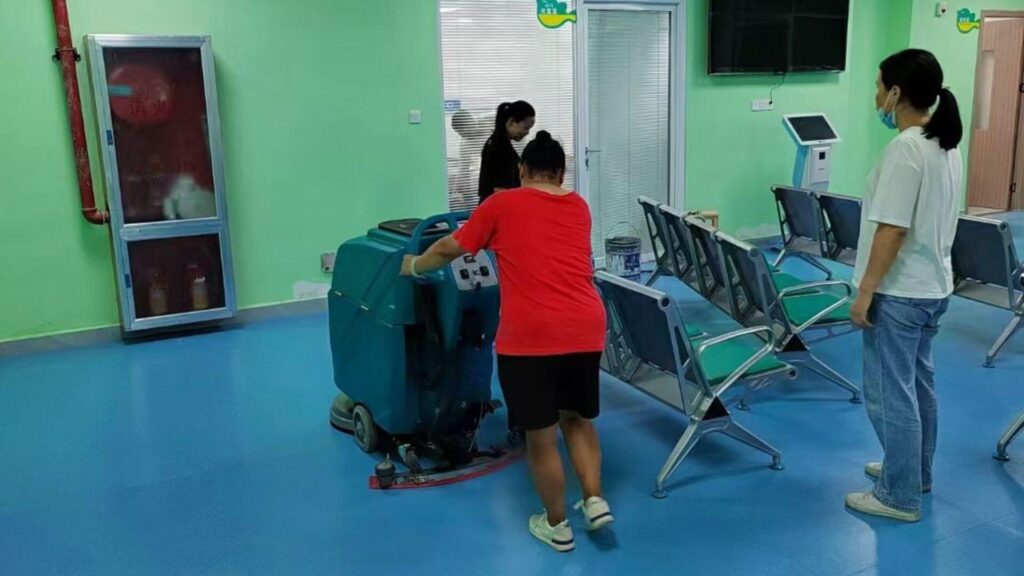
3. Reliability and Quality:
Known for its durability, the DC520 has a low failure rate. This reliability is crucial in a hospital setting where downtime can impact cleanliness and patient safety.
4. Low Noise Operation:
The machine operates quietly, which is essential in a healthcare environment where noise can disrupt patient recovery and comfort.
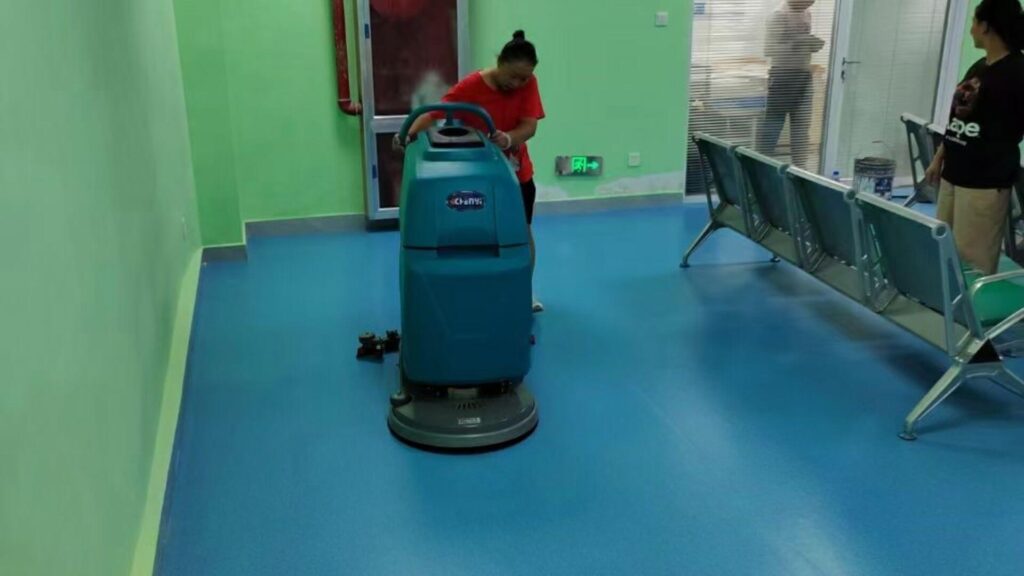
5. Ease of Use and Maintenance:
The scrubber is user-friendly, allowing staff to quickly learn its operation. Additionally, maintenance is straightforward, with low costs for replacement parts, ensuring that the hospital can keep the machine running efficiently.
6. Professional After-Sales Support:
CY provides timely and professional after-sales service, which is vital for addressing any operational issues that may arise.
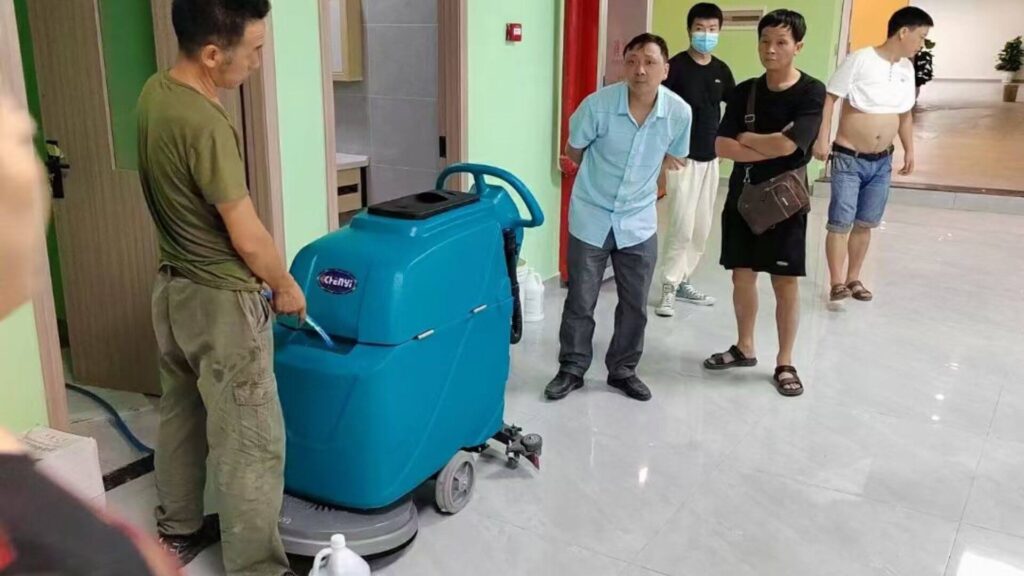
7. Positive Industry Reputation:
The DC520 has received excellent reviews from other healthcare facilities, reinforcing the hospital’s confidence in its decision. For instance, a nearby clinic reported significant improvements in cleaning efficiency and patient satisfaction after adopting the DC520.
Considerations for Using the Scrubber in a Hospital Setting
While the DC520 offers numerous advantages, using a scrubber in a hospital requires careful planning and adherence to best practices:
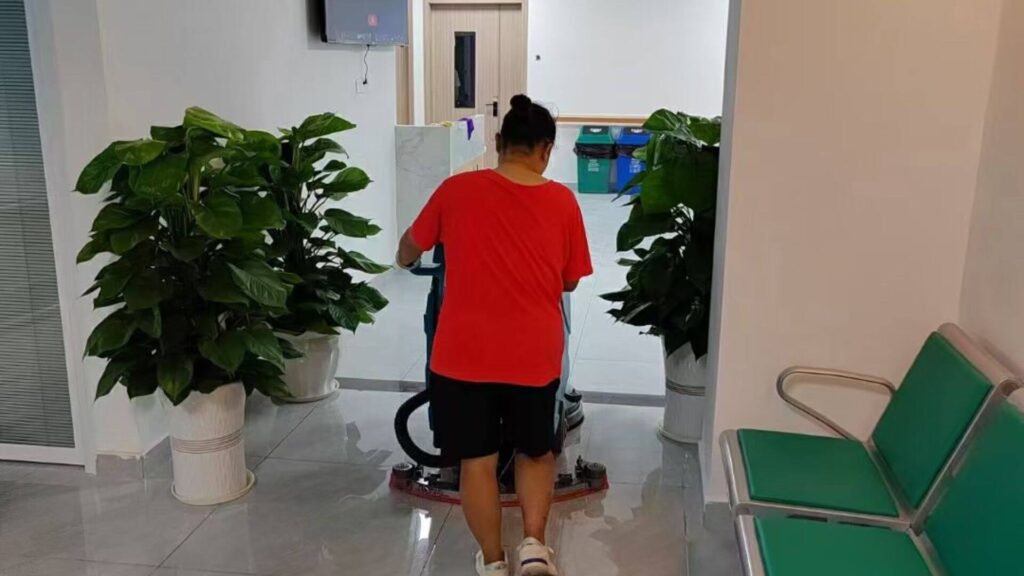
1. Staff Training:
It is crucial to provide comprehensive training for staff on how to operate the scrubber effectively. This includes understanding the controls, maintenance routines, and safety protocols.
2. Regular Maintenance Schedule:
Establishing a routine maintenance schedule is essential for keeping the machine in optimal condition. This includes regular checks of the brushes, water levels, and battery life.
3. Strategic Cleaning Schedule:
The hospital should implement a cleaning schedule that prioritizes high-traffic areas and times when patient activity is lower. This ensures minimal disruption to patient care.
4. Proper Chemical Use:
When using the scrubber, ensure that the cleaning solutions are hospital-grade and suitable for the surfaces being cleaned. This is vital for effective disinfection and maintaining a safe environment.
5. Feedback Mechanism:
Encourage staff to provide feedback on the scrubber’s performance. This can help identify any issues early and improve cleaning protocols.
Conclusion
The decision by the community hospital to adopt the CY Hand-Push Scrubber DC520 in 2022 highlights the importance of investing in reliable and efficient floor care equipment. With its affordability, practical design, and positive reputation in the industry, the DC520 has proven to be an essential tool in maintaining a clean and safe environment for patients and staff alike.
This case study serves as a valuable resource for other healthcare facilities considering similar investments in their cleaning solutions. By sharing this experience, we hope to inspire others to enhance their cleaning practices, ultimately leading to better patient care and satisfaction.
